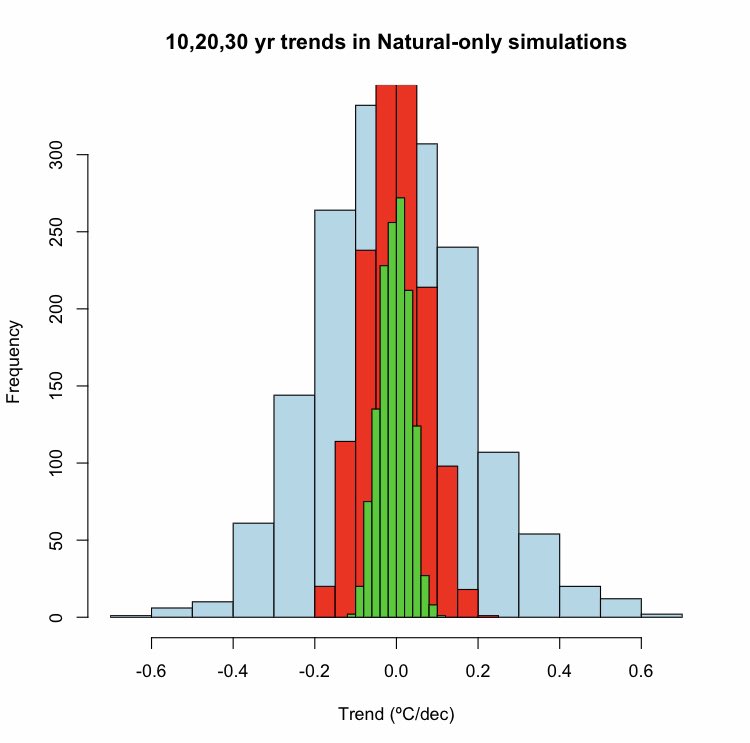
Some odd results in replicating latest Scafetta effort. I added the uncertainty on the observational temperature difference, and included all ensemble members for which I have an ECS (everyone except FIO-ESM-2). @micefearboggis @GarethSJones1 #CMIP6 



Note that there are many ensemble members that have temperature differences smaller than the ERA5 value with ECS > 3. None of which appear in Scafetta's figure.🧐🧐🧐
Possibly just a function of the automatic ensemble member selection when downloading from ClimExp?
Possibly just a function of the automatic ensemble member selection when downloading from ClimExp?
Regardless, Scafetta's claim that only models with ECS<3ºC are compatible with ERA5 is patently wrong.
Constraints based on recent trends only preclude the really high ECS models (> 5ºC), see work by @kasia_tokarska for better analyses of this.
Constraints based on recent trends only preclude the really high ECS models (> 5ºC), see work by @kasia_tokarska for better analyses of this.
Plotting the 1st ensemble member for each model, I get closer to Scafetta's distribution (some minor diffs in estimated ECS have an impact).
However, his conclusion still relies on ignoring the uncertainty in the obs & falls apart completely when all ensemble members are used.
However, his conclusion still relies on ignoring the uncertainty in the obs & falls apart completely when all ensemble members are used.

• • •
Missing some Tweet in this thread? You can try to
force a refresh












